In this Article
Toggle


Ready to hit the road from Kansas City to Wichita? Here’s what you need to know when plotting your course between the Sunflower State’s two biggest cities, whether you take the direct route or a more scenic path.
In the northeastern corner of the Sunflower State, spilling over into Missouri, is Kansas City. Known as the Barbeque Capital of the World, this bustling metropolitan area is home to the Kansas City Chiefs, more than 200 fountains, and 2.4 million friendly people.
About 200 miles southwest, near the Oklahoma border, lies Wichita. It’s the birthplace of several famous chains, like Pizza Hut, White Castle, and Freddy’s Frozen Custard, and is nicknamed the Air Capital of the World due to its role in aviation history.
Both Kansas City and Wichita offer a wide range of things to do, but what about traveling between Kansas’s two largest cities? While flying from Kansas City International Airport (MCI) to Wichita Dwight D. Eisenhower Airport (ICT) is an option, the drive to the airport, security checks, and flight time often make driving a more straightforward choice.
A road trip from Kansas City to Wichita not only connects two major Midwestern cities but also unveils a path filled with scenic beauty and rich history. Whether you’re a seasoned traveler or a novice explorer, this guide provides you with all the essentials — the best routes, ideal travel times, and must-visit stops—ensuring that your road trip is as exciting as the destinations themselves.
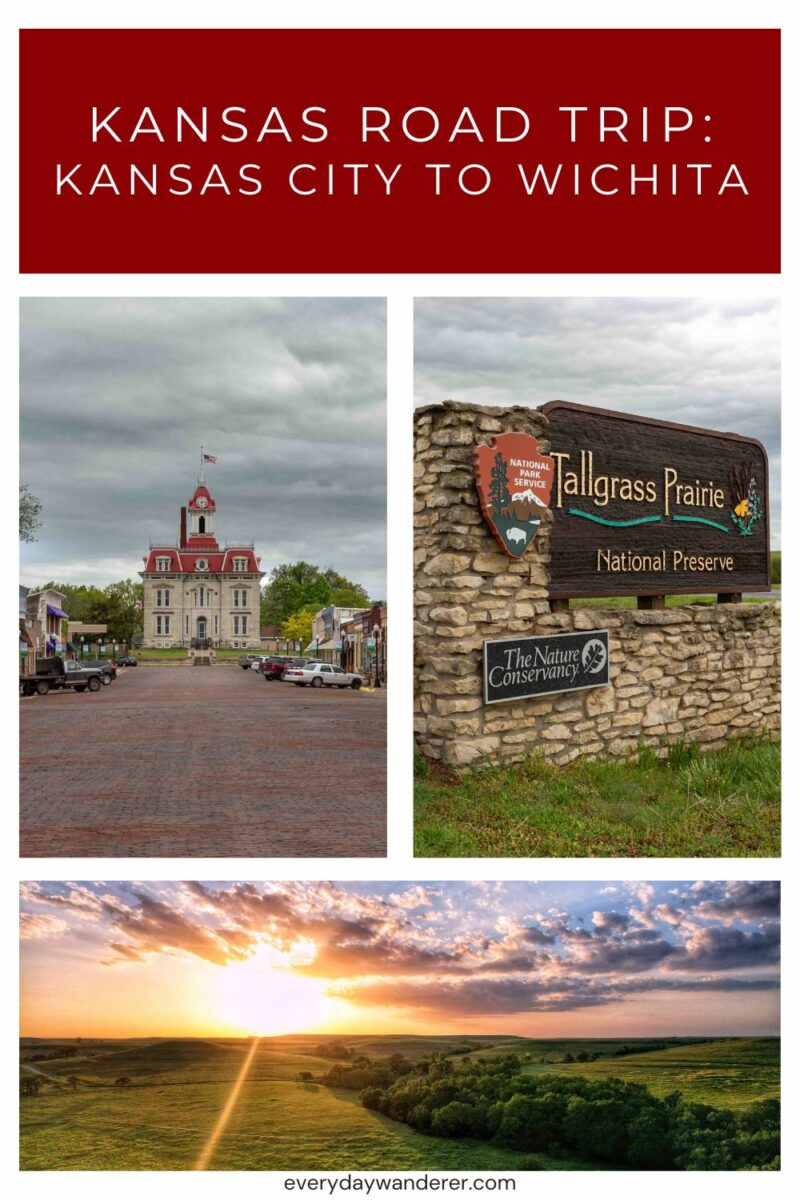
To help offset the costs of running EverydayWanderer.com, you’ll find affiliate links lightly sprinkled throughout the site. If you choose to make a purchase via one of these links, there’s no additional cost to you, but I’ll earn a teeny tiny commission. You can read all of the legal blah blah blah (as my little niece says) on the full disclosure page.
Choosing Your Route
When charting your course between Kansas City and Wichita, you have a few options. Do you want to get there as fast as possible, or would you prefer to wander along the scenic route?
Note: The driving distance and times listed assume normal weather and road conditions. Be sure to allow more time during inclement weather, road construction, or if it’s a game day at either the University of Kansas or K-State. You’ll also need to add in time for your planned stops.
Direct Route
About 200 miles and 3 hours (not including stops)
If you are more of a “hurry up and get there” kind of person, the quickest path between Kansas City and Wichita is Interstate 35. It’s not necessarily the most scenic drive, but it gets the job done, moving you between two of the Sunflower State’s biggest metropolitan areas pretty darn efficiently.
This route is mostly along the Kansas Turnpike. Toll fees vary, but if you enter the turnpike at the eastern terminal near Bonner Springs and take it to one of the Wichita exits, expect to pay between $12.50 and $14.00.
The Kansas Turnpike Authority (KTA) offers an electronic transponder called KTAG. Transponders from other states, like BestPass, Pikepass, EZ TAG, and others, also work on the Kansas Turnpike. With one of these devices attached to your front windshield, you can enter and exit the toll road without stopping to pay the toll, and the KTA will charge the debit- or credit card on file.
If you don’t have one of these nifty devices, you can stop for a ticket when you enter the turnpike and pay at a kiosk when you exit. You can also visit the KTA website within ten days of using the toll road and pay your toll online
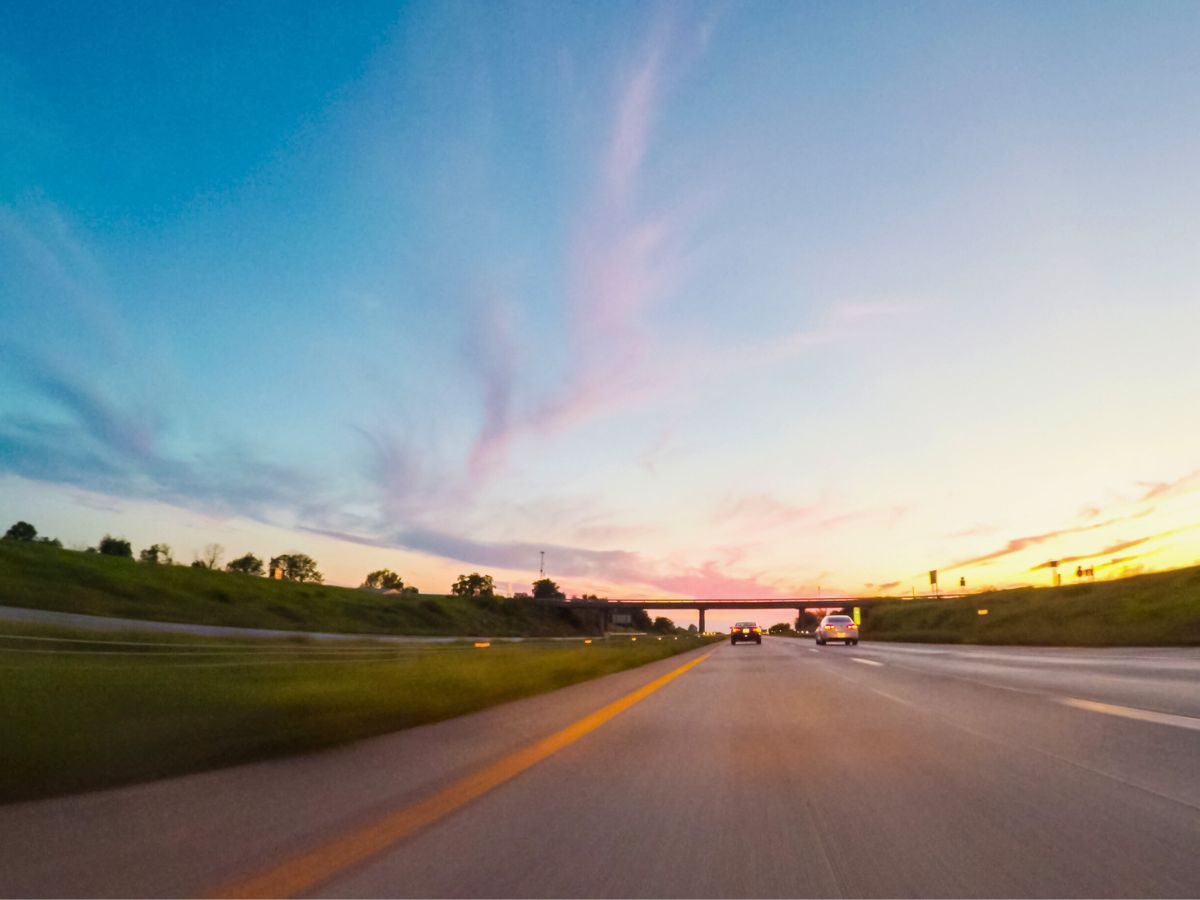
Stops Along the Direct Route
If you have a full tank of gas, everyone’s gone to the restroom, and you just want to get there, you may not need to stop. But if you do need to fuel up, take a bathroom break, or grab a few snacks, here’s what you need to know.
- Once you’re on the Kansas Turnpike, the only real place to stop is at one of the service plazas every 40 miles or so.
- These travel stops have plenty of pumps, clean restrooms, limited fast-food restaurants, and a few packaged food options. Although they cater to a relatively captive audience, the prices aren’t any higher than off the turnpike, but you do have limited options.
- If you are traveling with a furry friend, stopping at a service plaza is the best option for a quick walk or potty break.
- You can always exit the turnpike, but beware that you may pay slightly more in toll fees than staying on the turnpike.
Scenic Route
About 220 miles and 3 1/2 hours (not including stops)
If you favor a view, take a slight detour along the Flint Hills Scenic Byway. Stretching between Council Grove and Cassoday, the 47-mile-long scenic drive offers incredible views of the native grasses and wildflowers of the tallgrass prairie. While this route adds about 20 miles and 45 minutes to your journey, the opportunity to explore one of the last remaining native landscapes in the country is well worth the extra time. This travel experience allows you to witness vistas that remain largely unchanged from thousands of years ago, a testament to the enduring beauty of a land once home to the Kaw, Osage, and other native tribes.
Stops Along the Scenic Route
As you follow the route from Council Grove to Cassoday, consider these enriching stops:

Kaw Mission State Historic Site. Located in Council Grove, this site offers an immersive exploration of the rich history of the Kaw people, also known as the Kansa tribe. Established in 1850 as a mission school, this historic site along the Santa Fe Trail provides an interactive way to learn about Kansas’s native heritage.
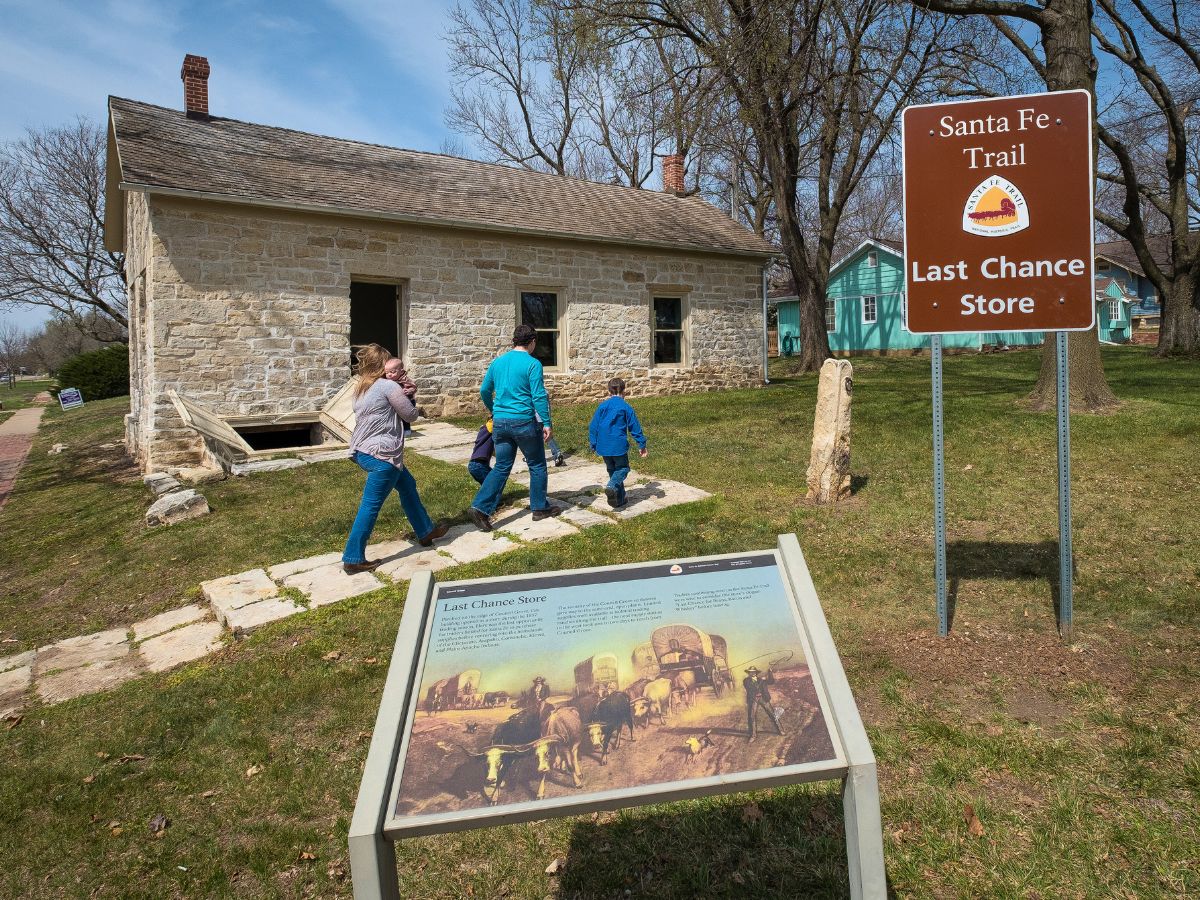
Last Chance Store Museum. This unassuming limestone structure in Council Grove is the oldest commercial building along the historic Santa Fe Trail. It earned its name by being the final stop for travelers to purchase supplies before embarking on the arduous 625-mile journey to Santa Fe, New Mexico. Today, visitors can step into a piece of pioneer history, exploring the store’s preserved structure and imagining the bustling activity of past travelers making their last-minute preparations.
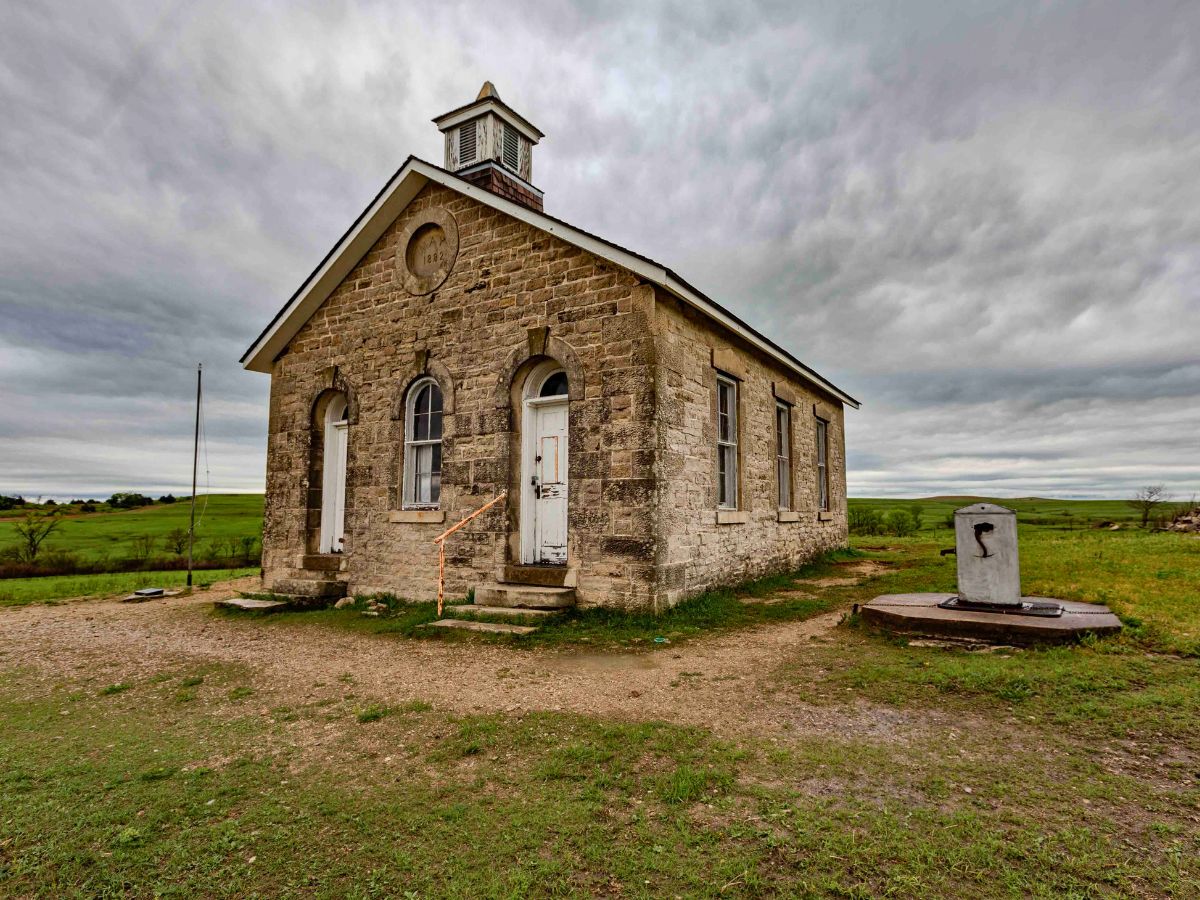
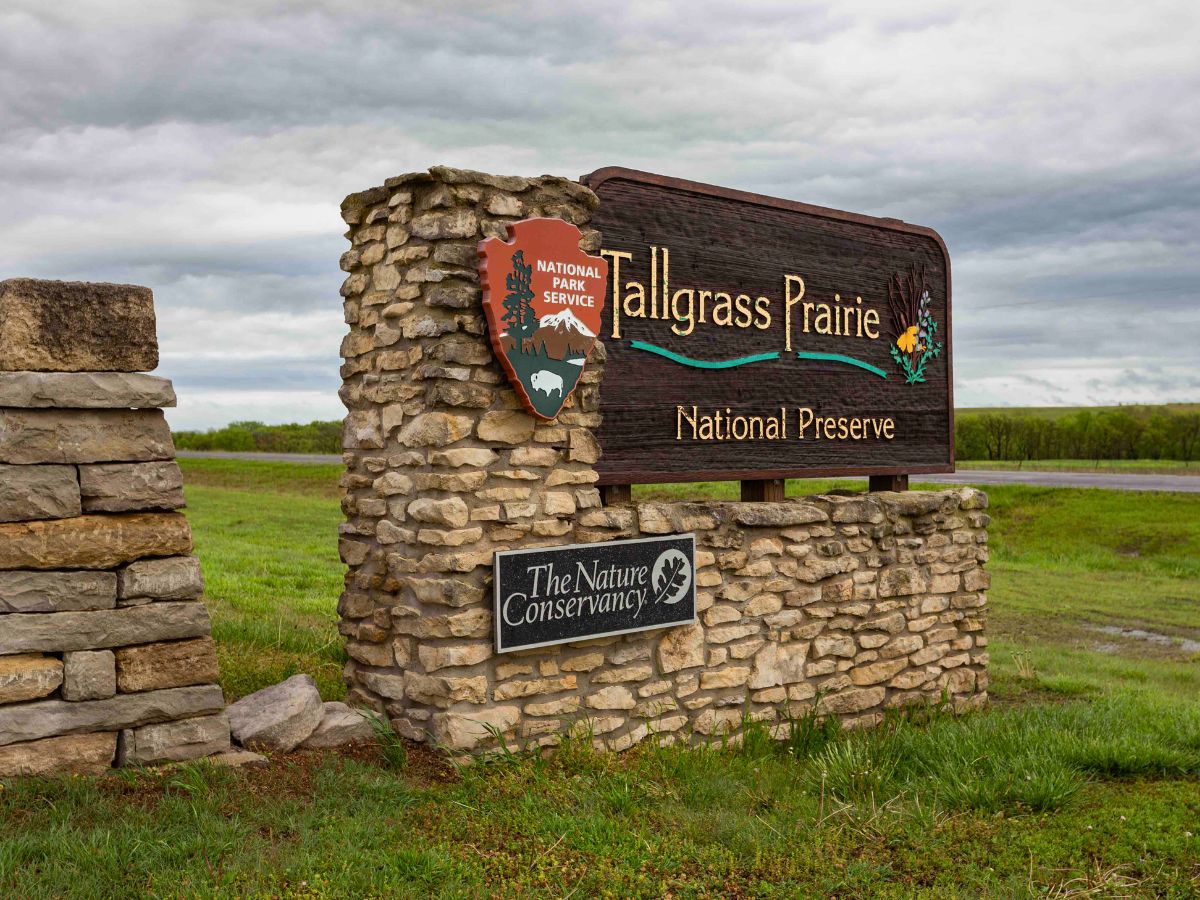
Tallgrass Prairie National Preserve. Spreading over nearly 11,000 acres, this National Park Service unit is dedicated to preserving one of the last tallgrass prairies in North America. Visitors can hike over 40 miles of nature trails, admire beautiful vistas filled with seasonal wildflowers, and observe a bison herd.

Prather Creek Falls. Also known as Chase Lake Falls, Prather Creek Falls is a picturesque, three-tiered waterfall located at Chase State Fishing Lake near the town of Cottonwood Falls. It may not be the tallest waterfall in the Sunflower State, but its accessibility and beautiful setting make it a favorite spot for enjoying the tranquil sounds of cascading water.

Chase County Courthouse. This beautiful French Renaissance building, constructed from native limestone between 1872 and 1873, is the oldest working courthouse in Kansas. It was designed by John G. Haskell, the first architect of the Kansas Capitol.
Sage Advice: As you drive the Flint Hills National Scenic Byway, tune into AM 1680 AM to learn more about the history, wildlife, and ecosystems of the tallgrass prairie.
Historic Route
About 245 miles and 4 1/2 hours (not including stops)
This route will add a sprinkle — or a full cannonball-sized splash — of history to your Kansas City to Wichita road trip. It extends your drive by approximately 45 miles and 60 minutes from the direct route, not counting the time spent at various sites. Along the way, you can experience a stagecoach stop along the Santa Fe Trail, explore a pivotal location for civil rights, and do much more to immerse yourself in Kansas’s rich history.
Stops Along the Historic Route
This route travels west to Topeka from Kansas City and allows you to connect with the scenic route above in Council Grove or jump on the turnpike near Cassoday and speed along to Wichita. Recommended stops include:

Mahaffie Stagecoach Stop. Located in Olathe, the Mahaffie Stagecoach Stop and Farm is the only remaining working stagecoach stop on the Santa Fe Trail. Visit for an authentic glimpse into 1860s stagecoach travel, farming life, and frontier living through hands-on experiences and historical reenactments.
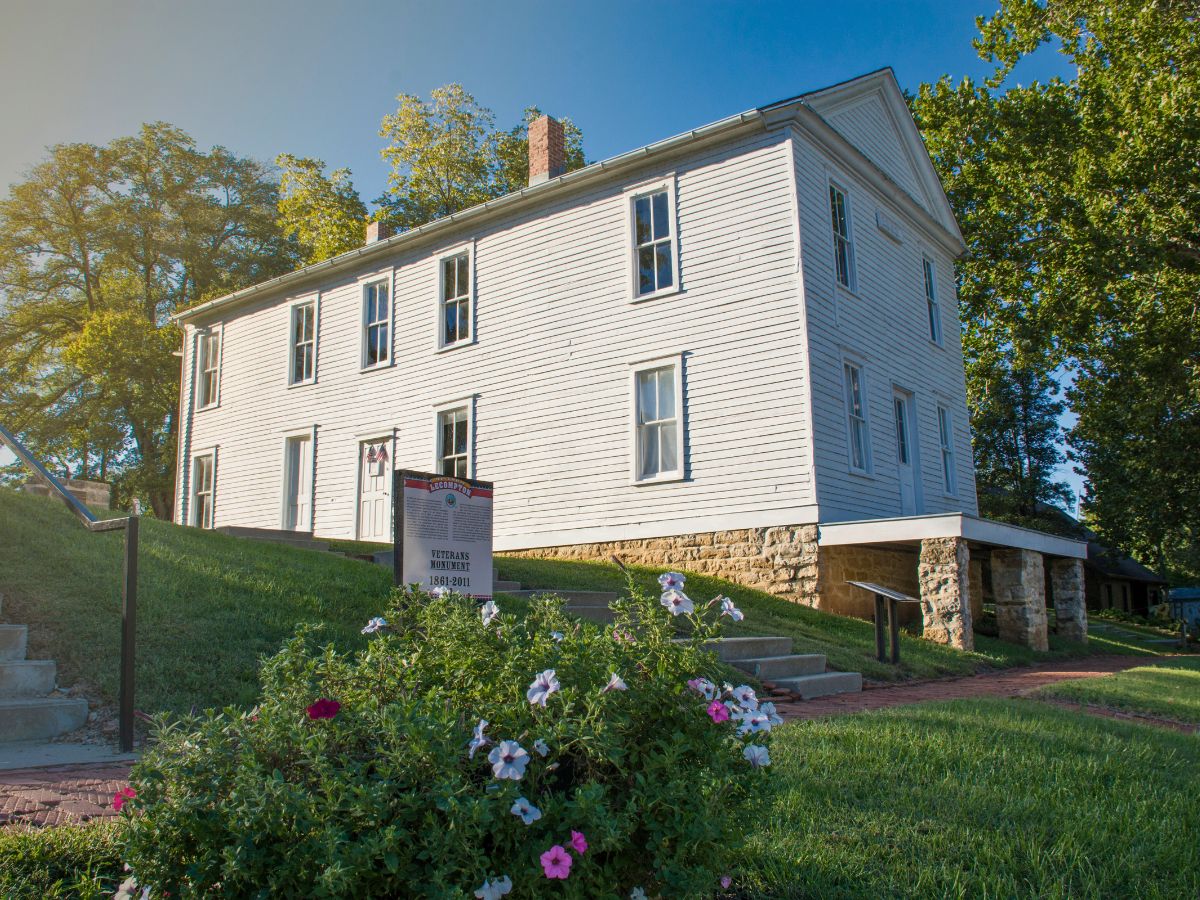
Lecompton. This small town was the territorial capital of Kansas from 1855 to 1961 and is known as the birthplace of the Civil War, where slavery began to die. Stretch your legs with this self-guided walking tour (or driving tour) of historic sites like Constitution Hall, colorful murals, and other landmarks.
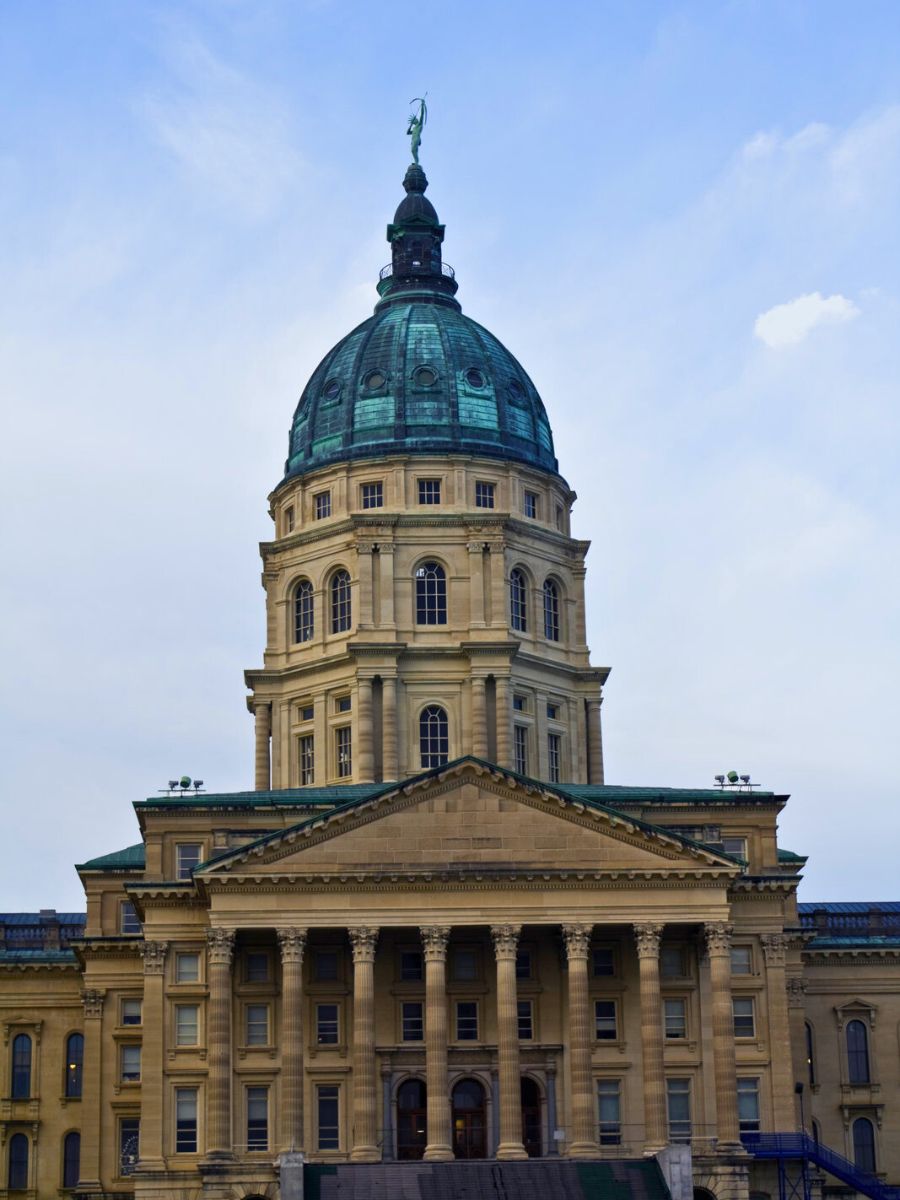
Kansas State Capitol. In the heart of downtown Topeka, the Kansas Statehouse is the only capitol building in the United States that allows visitors to go to the top of the dome and walk along a balcony for impressive views.
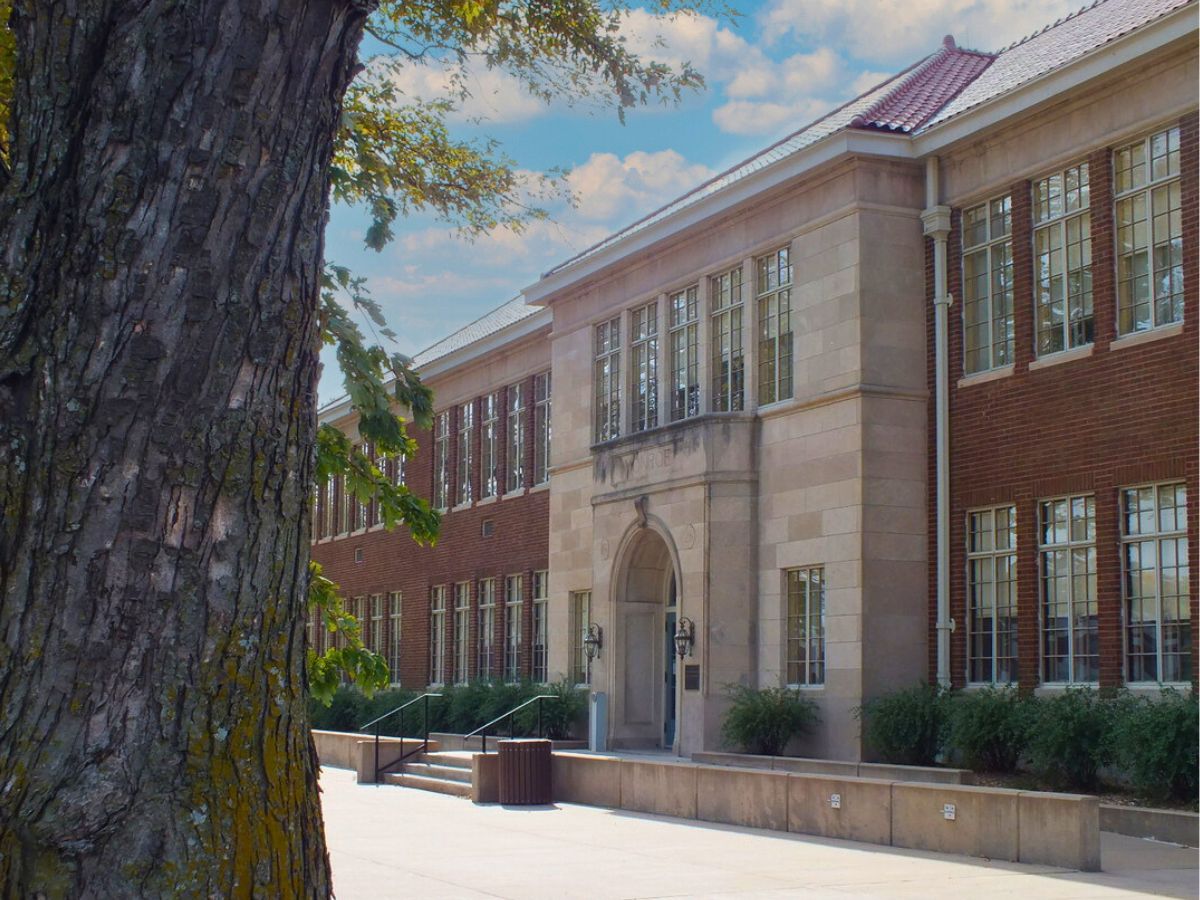
Brown v. Board of Education National Historic Park. Nearly 100 years after the end of the Civil War, Kansas was once again the center of the Civil Rights Movement. The Brown v Board of Education historic site celebrates the Supreme Court’s 1954 decision that struck down racial segregation in public schools as unconstitutional.
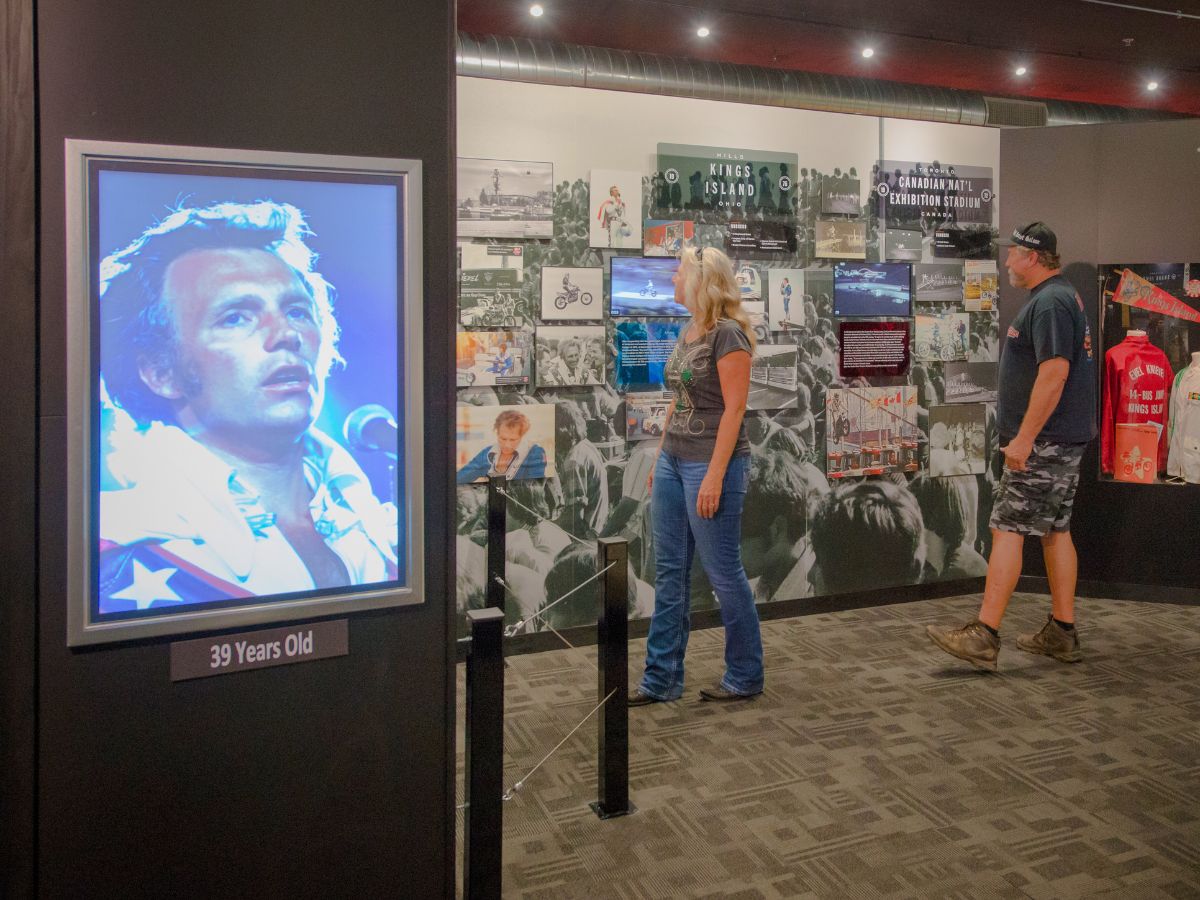
Evel Knievel Museum. Although he was born, raised, and buried in Montana, daredevil Evel Knievel’s legacy lives on in Topeka. Housed at the Historic Harley-Davidson of Topeka, the Evel Knievel Museum showcases the most extensive collection of Evel Knievel’s personal memorabilia, including his iconic jump bikes, performance leathers, and interactive exhibits like a virtual reality jump.
Best Travel Times
Timing is everything when planning a road trip, and the journey from Kansas City to Wichita is no exception. To fully appreciate Kansas’s changing landscapes and open skies, consider embarking during the mild seasons of late spring or early autumn. These periods offer comfortable temperatures and the opportunity to witness nature in bloom or the warm hues of fall foliage, providing a stunning backdrop for your travel.
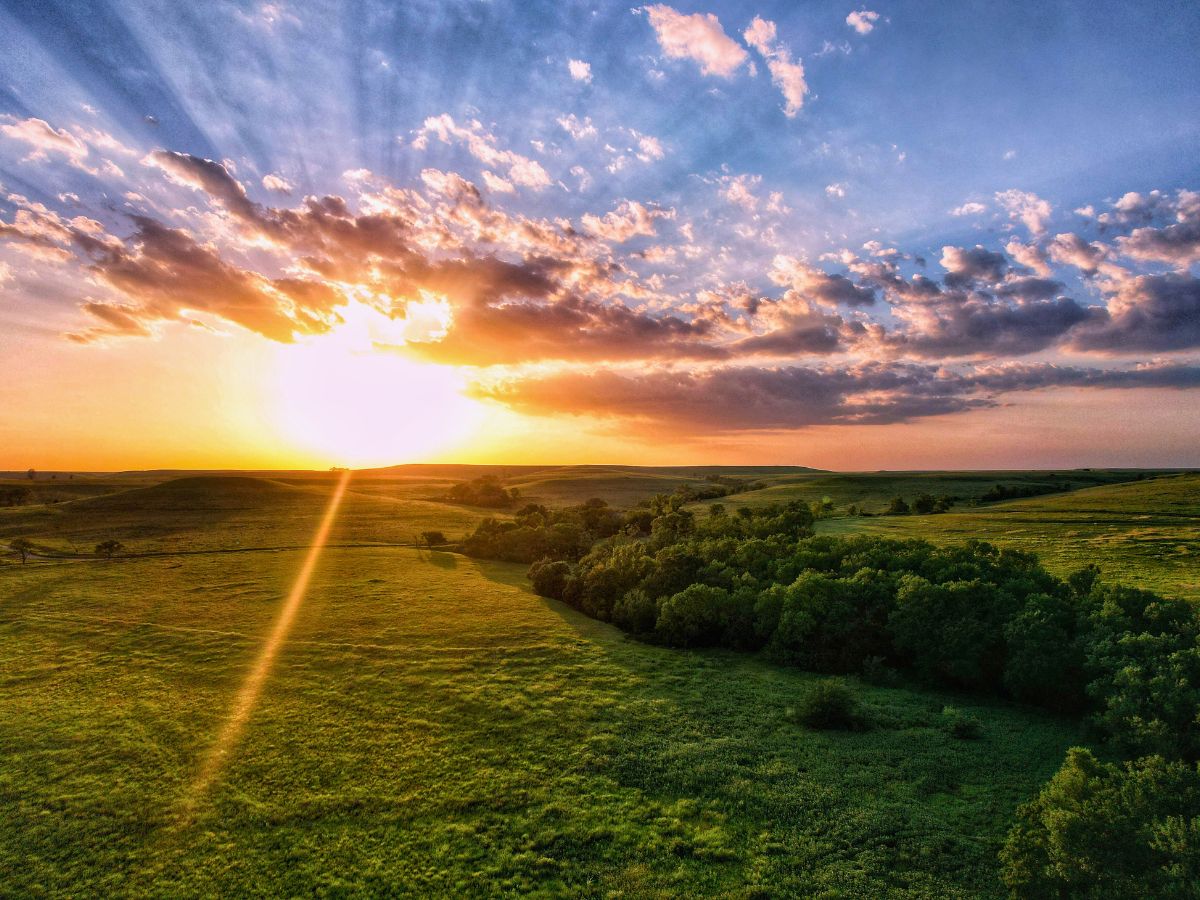
Morning Departures
Just like there’s no wrong way to eat a Reese’s peanut butter cup, there’s no bad time of day to hit the road from Kansas City to Wichita. However, an early start can significantly enhance your experience. Setting out early helps you avoid traffic and allows you to catch the majestic sunrise over the plains. Plus, you’ll arrive at your planned stops at the optimal times.
Avoiding Traffic
While the roads between Kansas City and Wichita are generally open, steering clear of rush hour can make your journey smoother. Avoid driving in the peak traffic times of 7-9 AM and 4-6 PM in Kansas City, Topeka, and Wichita to ensure a more relaxed trip.
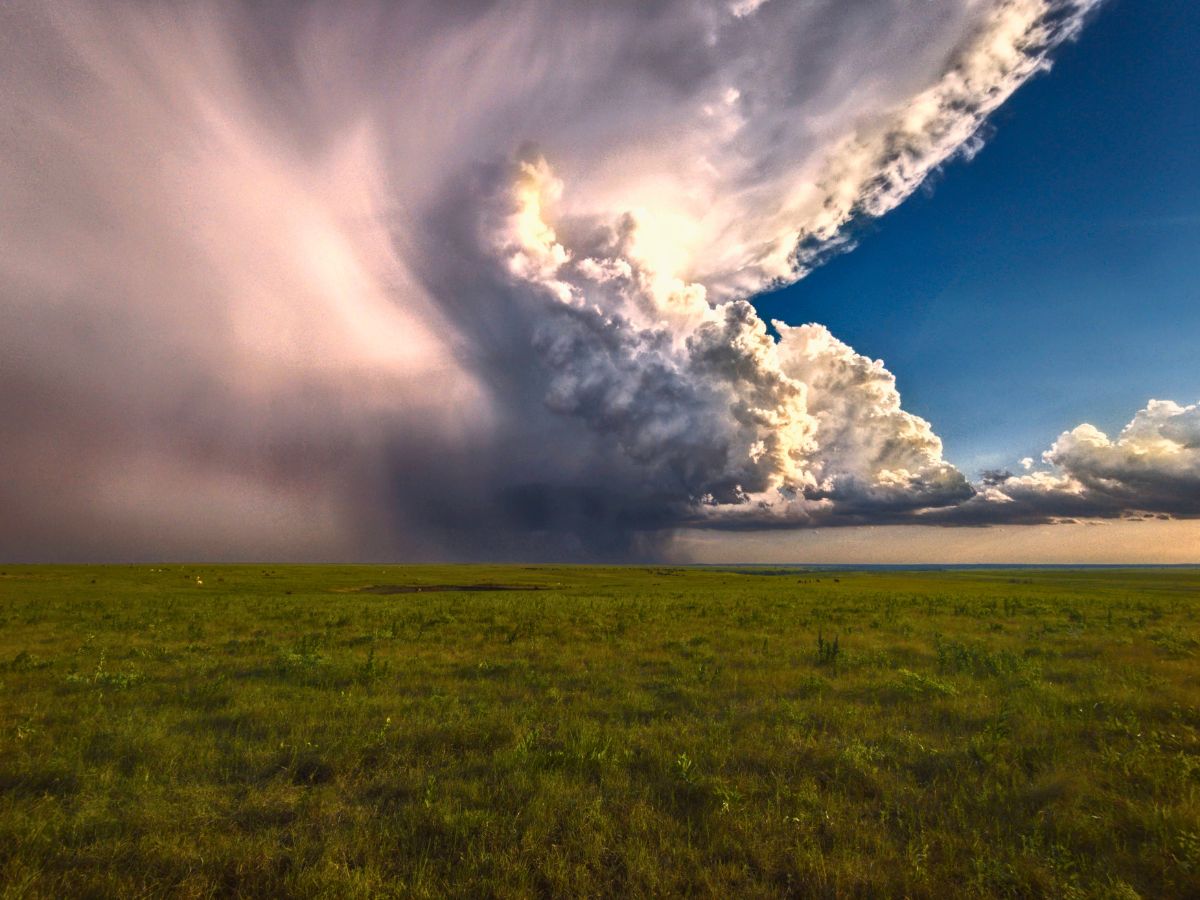
Weather Considerations
The prairies of Kansas are known for their wide-open spaces, which can mean sudden weather changes, particularly in transitional seasons. By watching the weather forecasts in the days leading up to your trip, you can sidestep any unexpected storms and enjoy clear skies for your adventure.
Safety Tips
When driving across Kansas, it’s essential to be prepared for a wide range of weather conditions. Be prepared for quick-forming thunderstorms, hail, and even the possibility of a tornado in spring. Expect snow and ice during the winter months. Always check weather forecasts before departure, and be sure you pack safety essentials like a first aid kit and emergency roadside tools.

The Last Mile
From the bustling streets of Kansas City to the pioneering spirit of Wichita, your road trip across Kansas is more than just a journey between two points. It’s a voyage through the heart of America, filled with opportunities to explore, discover, and create memories that will last a lifetime. So take your time, enjoy the views, and discover why there’s no place like Kansas.
Have You Driven from Kansas City to Wichita?
What were the highlights of your trip? Do you have any insider tips or must-see stops to share? Tell me all about it in the comments section below.

Looking for more information to plan your Kansas vacation? Check out my additional recommendations to help you plan your trip to Kansas including what to see and do in Kansas, the best places to stay in Kansas, where to eat in Kansas, and more!
Ready to Go?
Use These Helpful Links to Book Your Trip!
- Find low fares with airfarewatchdog and Skyscanner
- Book your plane ticket with Expedia or Kayak
- Or take the scenic route on an epic road trip in a rental car or an RV from Outdoorsy
- From hotels to private homes, find the perfect accommodation with Hotels.com or Vrbo
- Travel in style with a suitcase, carry-on, backpack, or handbag from eBags
- Save on tickets to attractions, sightseeing tours, and more with CityPASS, Tiqets, and Viator
- Don’t leave home without travel insurance from AXA
- Discover the sights, history, and culture of your destination with an interactive scavenger hunt
- Need something else to plan your perfect trip? Visit my travel resources page for more trusted partners. Happy wandering!
Sage Scott
Thank you for sharing!

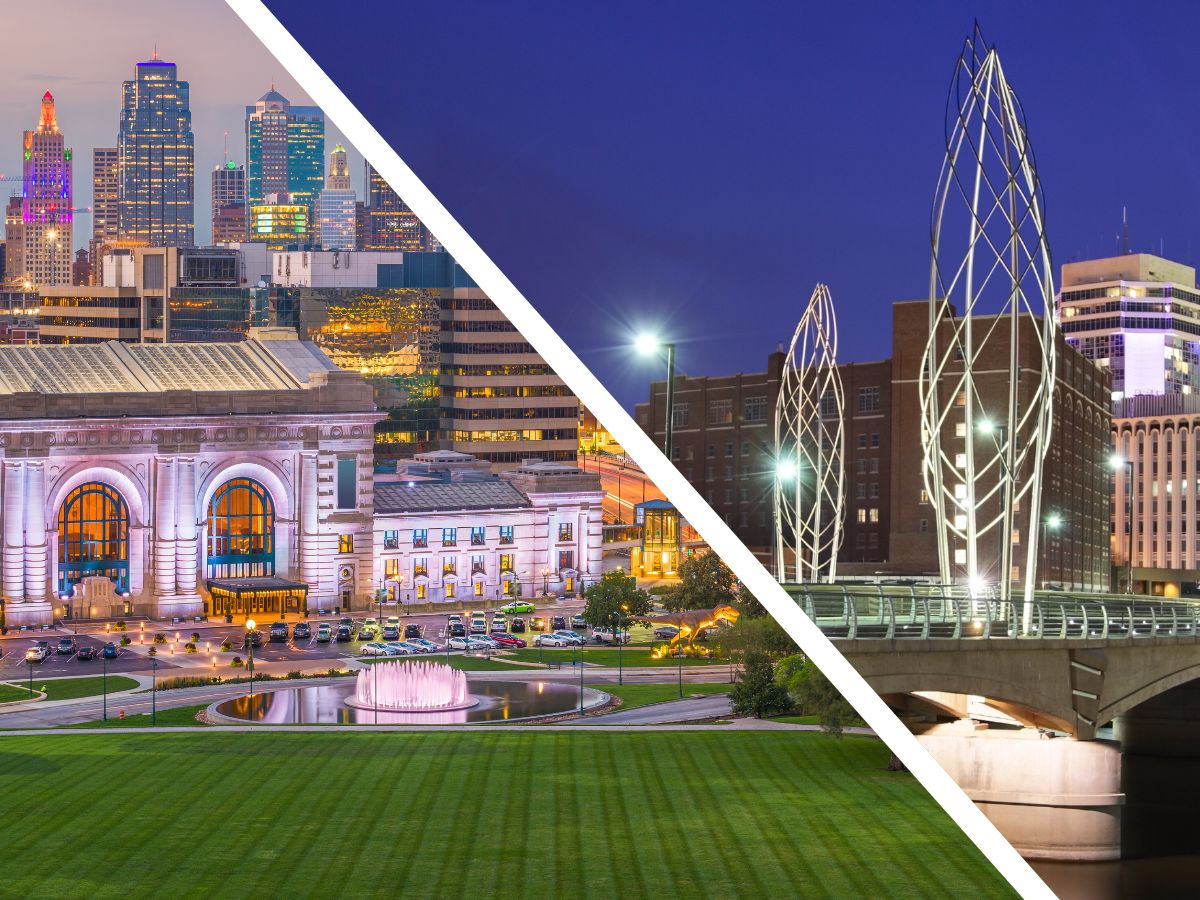


I’ve made this drive several times but didn’t know about most of these spots! Now that the kids are older, I’m going to make a point of checking out your suggested historical landmarks. It can be an educational trip!
If you can only pick one thing, I highly recommend the dome tour at the capitol. There’s nothing else like it in the US! 🙂